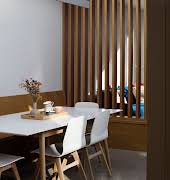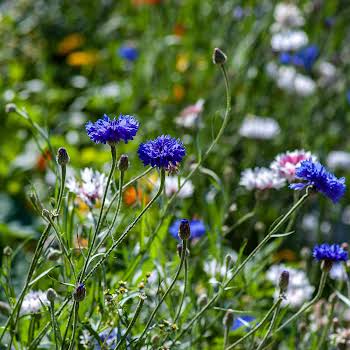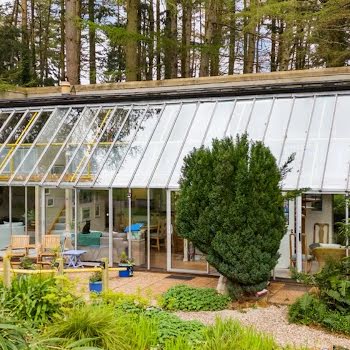
By Kendall Platt
03rd Jun 2024
03rd Jun 2024
Sponsored By

Focusing on the sound of the trowel as it sliced through the wet earth or the dink of the metal on a stone buried deep below the surface helped Kendall Platt to stave off burnout, adapt to life with two kids and come to terms with the loss of her wonderful dad.
Hot, wet tears were rolling down my cheeks as my shoulders wracked with sobs in an effort to conceal the emotions coursing through my body. By this point, it was almost a nightly occurrence and I didn’t have the words to explain to my loved ones what was wrong.
Deep down I knew these episodes were the consequence of overworking myself to try and prove I was worthy, never giving myself time to rest or to just do nothing. A frantic Googling session that told me I was burnt out or very close to it; this gave me just the jolt of reality I needed.
I was making myself ill and I needed to make a change.
The year before I’d moved into a new home that had a garden that needed some serious TLC. I quickly realised that time spent digging, pruning and tending to my plants was the only time my mind was quiet. So after a pretty unhelpful visit to the GP, I ‘prescribed’ myself some more garden time.
In little chunks of each day, my mind calmed, my garden grew and I clawed my way back from the edge of that burn-out precipice.

Soothing my mind
A few years later I found myself feeling those familiar feelings again. I’d just told my employer I was pregnant and to say the reaction was less than favourable was an understatement.
My first instinct was to throw myself more into work to escape the extreme anxiety I was struggling with. But I stopped myself and once again began to find solace in my garden so that I could process my emotions instead.
I poured my frustration at the injustice of the situation into creating a new seating area surrounded by plants. A place I could nestle myself amongst greenery and just be. Once my daughter arrived I found I had significantly less time to spend soothing my mind in the garden. If I managed to get five minutes outside I considered it a win.
At a time when I felt lonely, isolated from friends, colleagues and even those closest to me, combined with the intensity of new motherhood, I craved time alone in the garden. I realised I needed to find a quicker way to get into the flow state, where I knew I would be able to access all the mood-boosting and calming benefits that a longer time in the garden had previously given me.
So I started to incorporate elements of mindfulness into my gardening activities. Focusing on the sound of the trowel as it sliced through the wet earth or the dink of the metal on a stone buried deep below the surface. I started to enjoy the feeling of the dirt on my hands and inhaled its delicious earthy scent as I nestled my plants into the hole I’d just prepared.
Employing these methods enabled me to get the same effect in just five minutes as was previously taking me an hour or more.
Over the intervening years, mindful gardening has helped me to stave off burnout during the pandemic, adapt to life with two kids and come to terms with the loss of my wonderful dad.
My garden truly is my sanctuary, a place where I go to find myself when I’m feeling lost, to energise myself when I’m feeling tired, to grow my power when I feel like giving up on something.
If you’d like to create your garden sanctuary, here are a few things to consider:
Use of colour
Think about how you’d like to feel in your garden. Do you want to feel energised? Calm? Peaceful? Hot, vibrant, clashing colours are excellent at giving you an energy boost as soon as you step out into the garden. Whereas cool blues, greens and whites can make you feel like you’re floating on a cloud of calm.

Sensory plants
When creating a planting plan try and engage each one of your senses.
Sight: Include different plant shapes to add visual interest to your border.
- Spire shaped- Delphinium, veronica
- Ball-shaped- Dahlias, roses, peonies
- Dome-shaped- Achillea, sedum

Smell: Scent is hugely powerful in evoking memories. Is there a floral scent that reminds you of a person, place or time?
Past clients have included sweet peas to remember a favourite Grandma, tomatoes to whisk them away on holiday or roses growing up and over a front door to welcome them home.

Sound: One of the most effective ways to engage your sense of sound with planting, is to plant wildlife-friendly plants.
Lots of blue and purple and open-petalled flowers like daisies or asters attract the buzz of the bees. Plenty of seed heads and a water source to encourage birds to come and sing while they eat and bathe.

Taste: There’s nothing that tastes sweeter than a tomato or strawberry picked from the plant and popped straight into your mouth. What do you love eating that you could try growing?
Touch: A game changer for when you are feeling anxious or stressed. Touching a smooth or spikey sensory plant and focusing on your breathing can bring you back into your body when you need to find calm quickly. Some smooth options to consider are Angel Wings, Lamb’s Ears for something spikier, or Echinacea.

Places to stop and be
In today’s society, we live our lives at 100 miles an hour. Always jumping from one task to another our brains are filled to bursting with things to remember. There is huge power to just stopping and being, even if it’s just for five minutes with a cup of tea or coffee.
Creating places in your garden where you can sit as you move through your green space, not only encourages you to stop and take a pause for you, but it also allows you to notice the progress you are making in the garden, to congratulate yourself for what you’ve created so far and to inspire you for what you will create in the future.
The cultivation of a garden is a lifelong journey and one that gets to be not only enjoyable but life-changing, if you let it.
Kendall Platt is The Mindful Gardening Coach. She helps women take time out of their busy lives to quieten their minds whilst creating the garden of their dreams and getting creative with the flowers that they grow. Kendall is a writer, speaker and content creator, who has been featured on This Morning, BBC radio and in multiple publications such as The Independent, The Telegraph’s Stella Magazine and Happiful magazine.
The IMAGE Wellness Project is powered by Meaghers Pharmacy and in association with Activia, its4women, Irish Life Health, KIND and Pestle & Mortar. Visit our Wellness Hub to download your valuable workbook and to follow weekly updates including interviews, videos and podcast episodes with our leading wellbeing experts.























